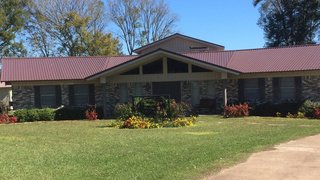In the world of construction, metal buildings east texas have carved out an important niche for themselves. Once primarily connected with industrial use, these structures are actually found everywhere—from residential backyards to commercial warehouses as well as modern office complexes. Their growing popularity comes from a blend of durability, design flexibility, and economic efficiency that traditional building materials often can’t match.
What Are Metal Buildings?
Metal buildings are structures primarily made from steel or aluminum components. They typically incorporate a metal frame, metal roofing, and metal siding, and they're often prefabricated offsite before being assembled on location. This streamlined construction process is one of the major reasons behind their increasing demand.

Key Advantages of Metal Buildings
1. Durability and Strength
Steel is probably the strongest materials available, so that it is ideal for buildings that need to withstand extreme conditions such as high winds, heavy snow, or earthquakes. Unlike wood, metal doesn’t rot, warp, or attract pests like termites.
2. Cost-Effectiveness
Metal buildings often are less costly to construct than traditional buildings. Because lots of people are prefabricated, they might require less labor and time to assemble. Additionally, they typically have lower maintenance costs and longer lifespans.
3. Speed of Construction
Thanks to pre-engineered kits and modular designs, metal buildings could be erected much faster than conventional structures. This makes them suitable for time-sensitive projects including temporary offices, emergency shelters, or fast-growing businesses.
4. Sustainability
Steel is extremely recyclable, and several metal buildings are produced from recycled content. Additionally, energy-efficient insulation and roofing options can help reduce the building’s carbon footprint.
5. Versatility in Design
Gone are the days when metal buildings were limited by boxy, unattractive structures. Today’s designs offer stylish finishes, customizable layouts, as well as a variety of cladding and color options to suit residential, commercial, and agricultural needs.
Common Uses for Metal Buildings
Warehouses and Storage Facilities
Workshops and Garages
Agricultural Structures (barns, equipment sheds)
Commercial Buildings (retail stores, office space)
Residential Homes and Barndominiums
Considerations Before Building
While metal buildings offer numerous benefits, it’s vital that you consider factors such as local building codes, insulation needs, and potential condensation issues. Working with a reputable manufacturer or builder ensures the structure meets all safety and efficiency requirements.
The Future of Metal Construction
As technology advances and sustainability becomes more central to construction practices, the metal building industry is poised for continued growth. With innovations in design and engineering, these buildings will simply become more adaptable and attractive to a broader range of industries and homeowners.
